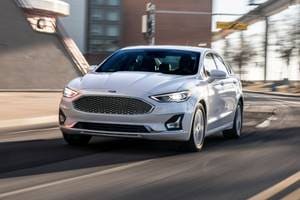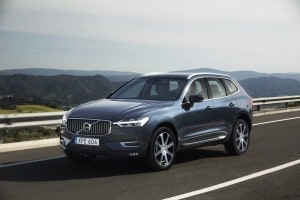What to Make of February
What should we make of February's strong sales performance? (Particularly the scorching pace set from President's Day through month-end.) More importantly, what does this mean in terms of sales going forward?
I can see two lines of reasoning, both perfectly plausible, that take us in very different directions. The bullish argument sees the recent sales tempo continuing to gain momentum; the recovery starts to look like a typical post recession autos rebound. In fact, under this scenario, the big problem is that automakers — and their suppliers — can't keep up with consumer demand. This is a high-grade problem as automaker, supplier and dealer profits jump. All this helps lead the overall economy into a much more solid recovery footing.
The more bearish argument is that February sales were boosted by a series of anomalies. We should still expect decent sales performance for the rest of the year, but that 15.1 SAAR will not be matched. SAAR will dip in the next few months, with upticks during the summer sell down and year-end sales periods. The year will finish up from 2011, but sales pacing will be consistent with the slow pace of recovery we have seen so far.
Now imagine you are an automaker, trying to figure out if you should press ahead and increase production or stick with your current plans. Which bet would you make? Before you answer, perhaps it will help if I outline both arguments in more detail. First an important footnote: January sales results were boosted by unusually high fleet sales. Looking across the industry, that doesn't seem to be the case last month; fleet was only a couple tenths of a percentage above normal. So fleet is not something I factor into either scenario.
Here's the bearish argument: Let's start with a point I have made before about the SAAR adjustments. SAAR assumes that sales will be lower in the month of February. In other words, unit sales could be flat and the February SAAR will increase. A small increase in unit sales will trigger a jump in the SAAR.
Unit sales in February were healthy, by recent standards, but not exceptional. (Only slightly ahead of December 2011.)


A second SAAR point relates to the weather. We have seen unusually warm weather across much of the country. It would seem safe to assume that blizzards and inclement weather are not conducive to vehicle sales. But rather than just assume, I asked our analytics team to look at storms, temperatures and vehicle sales by state over the past several years. The data is a bit "noisy," but there is a statistically significant connection between temperatures and vehicle sales. (Lower temperatures tie to lower vehicle sales.)
Here are the ten states where the correlation is the strongest:

Implicit in the SAAR adjustment is that temperatures will be average. If the temperatures are higher than average, then the SAAR calculation will overcompensate. (SAAR will overstate the annual sales.) This could easily be the case for February.
The third point is that February sales benefited from the rebuilding of inventories after the Japanese earthquake related shortages; rebuilding we expected to finish last year, but was slowed by the flooding in Thailand. The effected automakers' product issues now seem to be behind them. This is causing a short-term boost as buyers who had waited for improved availability return to market.
Finally, there are gas prices. The last few weeks have seen an amazing amount of media coverage on the issue of rising gas prices. We have noted a strong correlation in the past between media coverage and a shift in buyers' preferences to smaller vehicles when coverage levels are high.

Along with a shift in the vehicles purchased, I can also make the case that some consumers may elect to trade in a low mileage vehicle for one that gets better mileage. This is usually not a cost effective move unless a consumer was planning on buying a new vehicle anyway. And perhaps some consumers were encouraged in February to act a bit sooner than they would have otherwise, (suggesting that sales will be a bit softer later this year).
Finally, the economy may not be doing quite as well as we all had hoped. Recent indicators are mixed. Higher gas prices may undermine consumer confidence, while housing is still a drag on growth.
Add all this up and we would expect March sales pacing — which will need a big jump in unit sales to match February's SAAR performance — to be moderate. As I noted earlier, SAAR will see upticks over the summer and toward year-end as deal seekers enter the market. (Another SAAR anomaly is that it under-estimates the increase in buying during event periods when consumers feel economic distress.)
In short, our slow auto recovery continues. As the year progresses, with production issues behind them, effected automakers will be looking to earn back share. A market with strong competition could conceivably introduce margin pressures. Quite the opposite of what the bullish argument suggests...
Now let's switch gears and consider the bullish argument. Underpinning this view is the idea that consumers who have delayed the purchase of a new vehicle will eventually have to buy something. (Even today's high-quality vehicles eventually wear out.) Indeed, our estimates are that there are over 4 million of these buyers who are "on the fence." As these buyers return to the market, they will give sales a big lift.
This "delay, then buy" behavior is what is behind the sales pattern we typically see during and after a recession. Sales collapse as discretionary buyers elect to wait things out. As these buyers regain confidence they return to the market and sales accelerate quickly. Notably, this is a pattern we have not seen in this recession. Sales certainly collapsed, but the rebound has been anemic.
Are these buyers behind recent sales increases? There are some encouraging signs. The first is that vehicle sales didn't miss a beat during recent financial market turmoil. (I am referring to the US government debt ceiling mess, the S & P downgrade and the stock market gyrations.)
Another indicator we have been tracking is the average age of vehicles traded in. For the last couple months, it has jumped significantly: from over 5 years old to now over 6 years old. This suggests consumers who have been hanging on to their vehicles are finally entering the market.

It is also interesting to note the percentage of deals that involve a trade has also increased.

Another positive sign is that the average credit score of vehicle buyers who financed their purchase (as reported by Experian) has been dropping. Easier credit allows more consumers to buy.

And perhaps the economy is actually getting on a solid recovery footing. Recent declines in housing inventories could portend a return to increasing values. Perhaps gains in employment will accelerate. A resolution of the situation in Iran would send oil prices sharply lower.
All this suggests we could see a month or two with a SAAR exceeding 16m before year-end. Hot selling vehicles become scarce, sending prices higher (and incentives lower). Automaker profits jump and dealers report record profits.
Are you bullish or bearish? Perhaps the prudent thing is to wait a few weeks. March sales usually jump from typically low January and February levels. We will need to see sales of 1,487,000 in March to equal February's SAAR. If we get even close to that performance, put me in the bullish camp.





